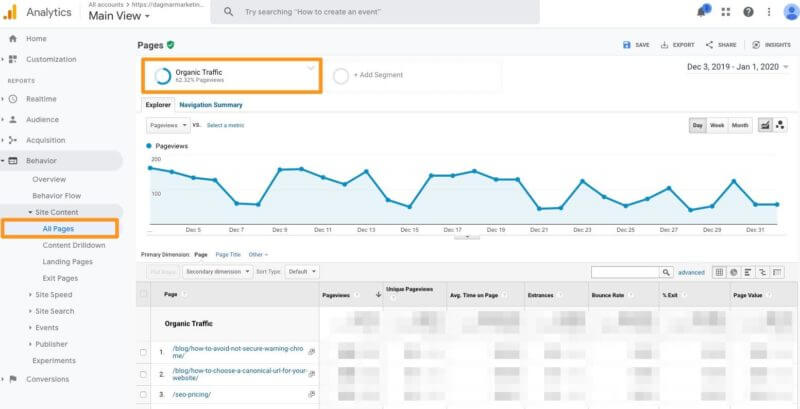The beginning of a new year is an ideal time to build a new content strategy for your business. One of the easiest tactics to generate new traffic is also one of the most overlooked: Updating and expanding your old content.
The benefits of content upgrades
Unlike fine wine, the content on your site doesn’t necessarily age well, with some pieces degrading as time goes on. Creating new content is not always needed when you have a body of good content that can be made to work harder and deliver quick results with some refreshing.
Upgrading existing content provides the following benefits:
- Provides a better user experience: Users read your content for information, but if yours is out of date, it’s not useful anymore. Ensuring your content is current and accurate is the single best thing you can do for your readers’ experience.
- Maintains URL authority: Every time you create a new page on your site, the new URL has zero authority. The URLs of older content have existing authority from any links they’ve acquired, and just from being aged.
- Can be optimized for new or more keywords: As you’ll see below, one of the biggest benefits of checking your data is to see what types of search queries are resulting in impressions and clicks. Sometimes you’ll see a good keyword with a very low click-through rate. Simply editing content to include that keyword or its variations helps the content rank better and gain higher click-through rates.
How to decide what content to upgrade
Step 1: First, go to Google Analytics and select Behavior > Site Content > All Pages.
Make sure that you first segment the data by Organic Traffic so you’re viewing only the most-visited pages by organic users. Make a note of the top 10 to 15 pages driving the most organic traffic to your website. You can either use the export feature in GA or simply copy and paste the list into a google sheet.
Note: Google doesn’t show the root URL, which is fine for the next steps.
Step 2: Next, you can use Google Search Console data to provide insights into how to upgrade the new content.
In Search Console, go to Performance report in the left navigation, select your date range, and click the + NEW button to segment the data by page URL. I normally select the filter “URLs is exactly” and then copy and paste the top URL from our list.

Once you have added your URL, you will see all of the search terms that people used to find your page.

We wrote this particular article to cover the issue of the “Chrome not secure notice” if your website wasn’t secure, but saw that we had a lot of searches related to “how to make a website secure.” You will want to find similar search patterns that your initial article didn’t cover or didn’t delve into and upgrade that section of your article to better align with the search patterns.
Make sure you choose search patterns that are relevant for your business and the original article. In this case, you can see a nice increase in traffic until the November Google core update that targeted relevance. The intent of the original article was about the “Chrome not secure warning” rather than how to make a website secure.
We are following these same tactics to try to recapture the lost traffic in a more relevant way.
Other content upgrade tactics to use
- Fix any broken links: This tactic goes to both user experience and SEO. If you have content with a lot of links, or links related to seasonal/dated content, regularly check to make sure the link is still live and current to avoid negative effects on SEO. When you make edits or changes, republish your content.
- Add more images or video: Images and video can become outdated as well. Always check to make sure any media on your posts are still relevant. Another way to upgrade is simply adding new media, especially videos. We’re seeing more interest in videos as time progresses—if it’s feasible, create and add a relevant YouTube video to your posts.
- Add or change a call to action to increase conversions: Your content is probably meant to push a reader from a tire-kicker into some sort of customer. Experiment with your calls to action and headings that can lead to increased conversions.
How often should you update your content?
There is no set standard for updating frequency and realistically this varies by website and industry.
If you are just starting out, you won’t need to focus on updating content for at least 12 months. If you have an existing blog that gets traffic, every six months is a good timeframe to review data and determine which content is doing well or could benefit from updating. If your industry is often in flux, you may find that content needs to be updated much more often to stay current. If, however, you have more than 10,000 visitors a month, you might want to update your content quarterly.
Conclusion
If you’re looking for a way to boost your rankings, improve your SEO and provide better information to your readers, consider updating your existing content. This is a good option to leverage your current SEO and avoid creating new content that will likely take time to start working. Don’t forget: Once you’ve updated your content, it’s time to share and promote it as well.
Opinions expressed in this article are those of the guest author and not necessarily Marketing Land. Staff authors are listed here.

